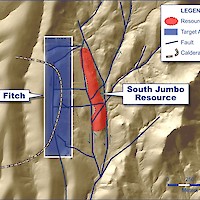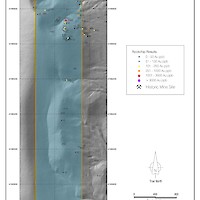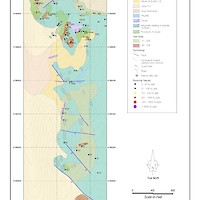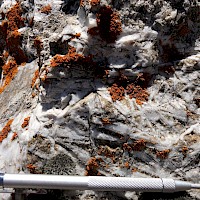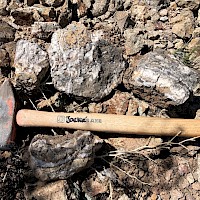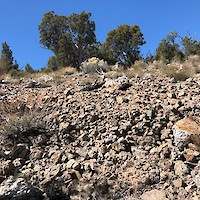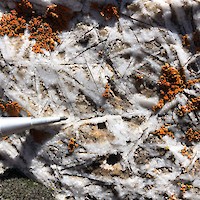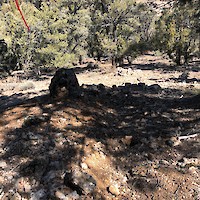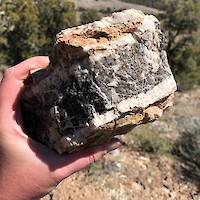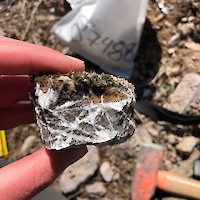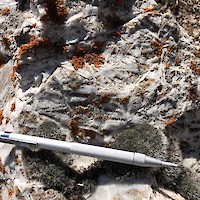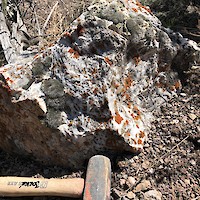System Type:
Epithermal, quartz-calcite veining, breccias and strong stockwork zones.
Strike-Length:
The fitch target has a 1.5km strike length potential.
Resource:
None at this time
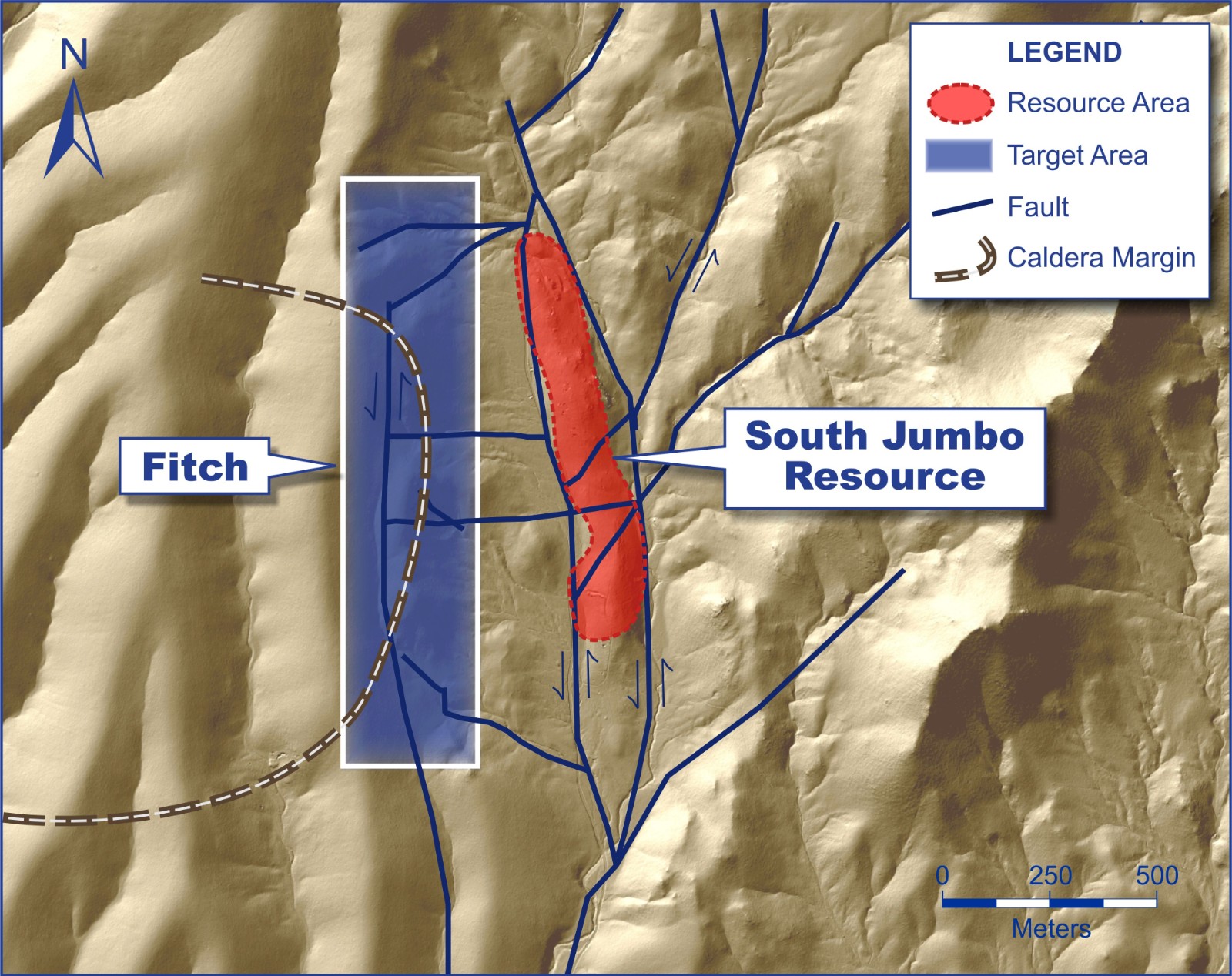
Location:
The Fitch target lies on the Utah side of the Gold Springs project and is located 200 meters due west of the South Jumbo resource area, along a north-south trending ridge line that runs parallel to the South Jumbo ridge.
Drilling:
None to date.
Geophysics:
The CSAMT ground geophysical survey extends to the southeastern edge of the Fitch target where a resistivity anomaly is starting to develop (see map below). The ZTEM airborne geophysical survey shows a crescent shaped resistivity anomaly underlying the Fitch target which is thought to be representative of a caldera margin.
Geology:
Fitch appears to be a high-level expression of an epithermal system, with similar characteristics to the North and South Jumbo resource areas. Alteration is traceable for 1.5 kilometers along a strike through a series of windows in post-mineral material. Quartz-calcite veining, breccia textures, and stockwork zones are best exposed in the uplifted northern blocks where historical mining activity took place. Mineralization consists of calcite-quartz banded and bladed veins hosted within strongly clay/sericite altered andesite which is exposed over widths of up to 200 meters. Calcite-quartz veins are observed as float in windows through post-mineral materials occurring as blocks up to 1 meter across with concentrations highest around historical mining trenches. In these areas the vein material makes up 35-40% of the back fill used to close the historical mine shaft.
Structural Geology:
The target consists of a series of conjugate fault sets that have accommodated block faulting with the displacement down-dropping to the south. The uplifted north block represents the deepest exposure of the epithermal system and suggests the higher level exposures to the south are above the gold bearing zone. The Fitch target is hosted along a caldera margin identified in the ZTEM airborne geophysical survey and is also associated with north-south-slip faults which parallel those seen in the near-by South Jumbo Resource Area (See Map below).
Historical Mining:
There are a few historical mining pits and trenches and one reclaimed shaft located within the area.
Geochemistry:
Gold mineralization is associated with quartz-calcite veins and breccias. Samples collected from areas of historical mining and trenching returned the best results for gold and silver with the highest grades being 2.4 g/t Au and 43.1 g/t silver.
Table: Rock Chip Sampling Results from Fitch:
|
Sample |
Sample Type |
Target |
Description |
Au g/t |
Ag g/t |
|
53082 |
Dump |
Fitch |
Brecciated quartz vein |
2.39 |
4.4 |
|
53084 |
Float |
Fitch |
Brecciated quartz vein |
0.50 |
1.9 |
|
87425 |
Float |
Fitch |
Silicified breccia with clay alt andesite clast, strongly oxidized |
0.35 |
1.0 |
| 87427 | Dump | Fitch | Brecciated Clay altered and oxidized andesite with stockwork quartz veining | 1.47 | 43.1 |
| 87435 | Float | Fitch | Banded and bladed white quartz vein | 0.91 | 4.2 |
| 87436 | Float | Fitch | Bladed white quartz vein and brecciated andesite | 0.67 | 3.3 |
| 87482 | Float | Fitch | Bladed and banded white quartz vein | 1.28 | 6.3 |
|
113790 |
Dump |
Fitch |
Banded and bladed quartz-calcite vein material. |
0.31 |
4.0 |
|
113792 |
Float |
Fitch |
Calcite-quartz vein with dark grey calcite and partial white silica replacement of blades |
0.30 |
3.0 |
|
113793 |
Float |
Fitch |
Banded and bladed calcite-quartz vein material with hematite between blades |
1.56 |
7.0 |
| 224307 | Float | Fitch | Brecciated andesite with lattice bladed silica cement | 0.93 | 29.3 |
A cutoff grade of 0.25 g/t Au was used, which is the cutoff grade of the nearby South Jumbo resource.

